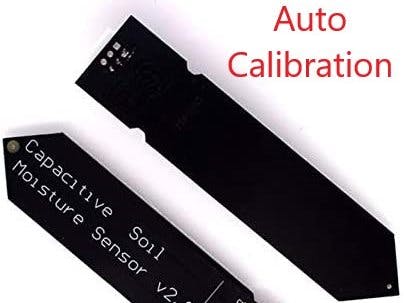So I read up a bit and found out that the Capacitive Soil Moisture Sensors are the way to go if you want to include some irrigation automation or soil moisture sensing to your arduino project.
These sensors don't corrode, and they work pretty well.
However, they need some re-calibration every now and then. And since I wanted to include it in a finished product, I created a Guided Auto Calibration Program that starts with the press of a button.
You just modify some variables and the text you want to display, and the program finds the highest (air value) and the lowest (water value) values and redefines them to the variables used in the same program.
Hope it's helpful.



_ztBMuBhMHo.jpg?auto=compress%2Cformat&w=48&h=48&fit=fill&bg=ffffff)





Comments
Please log in or sign up to comment.